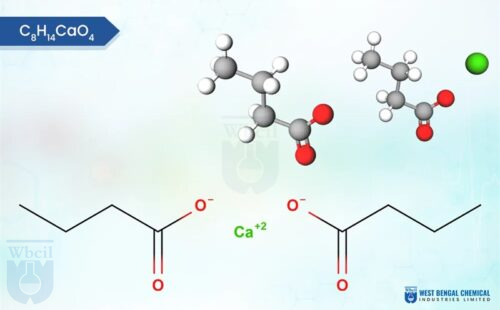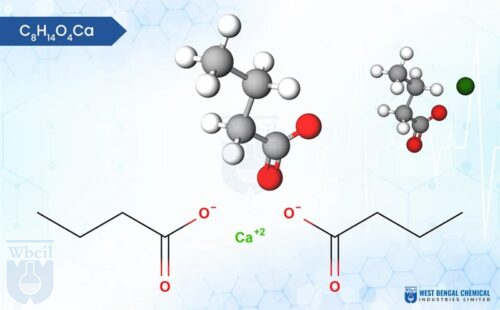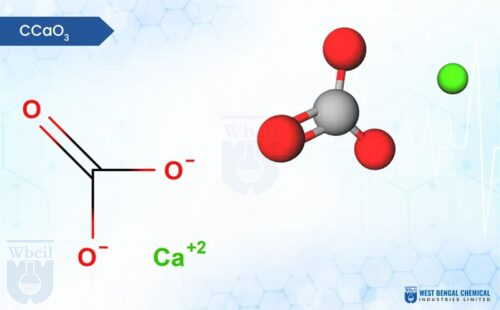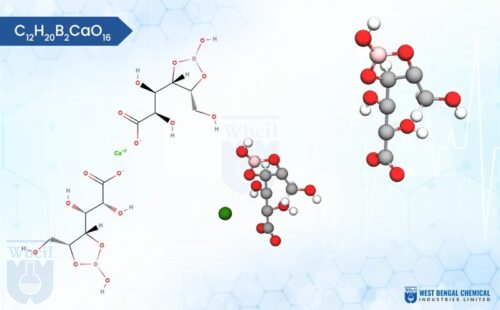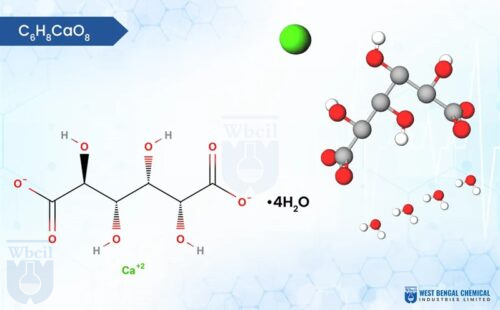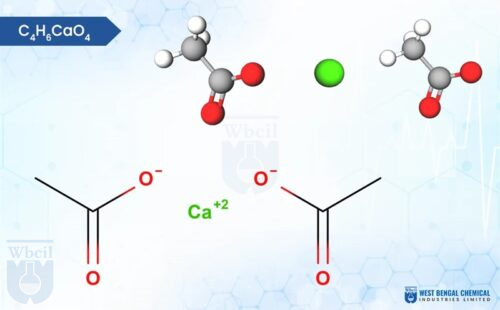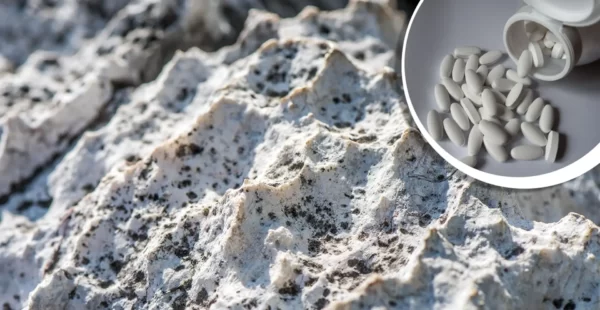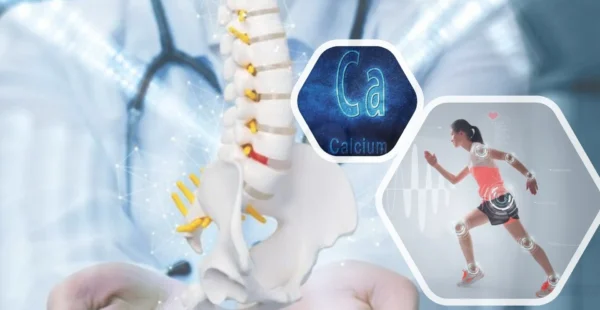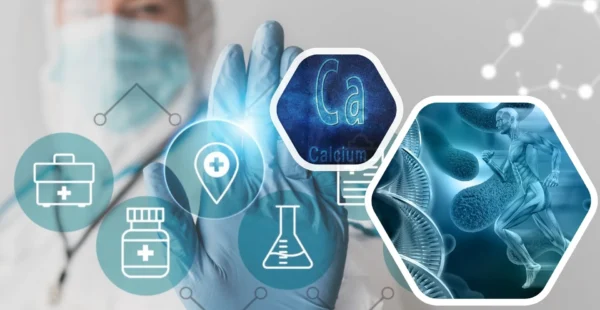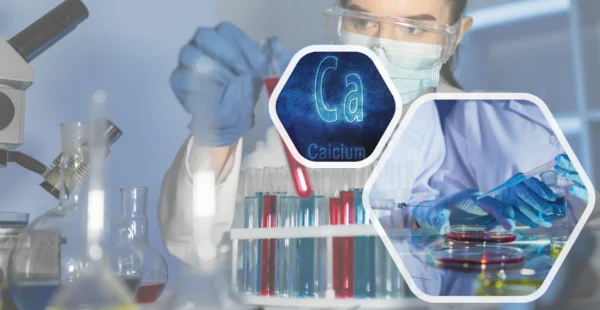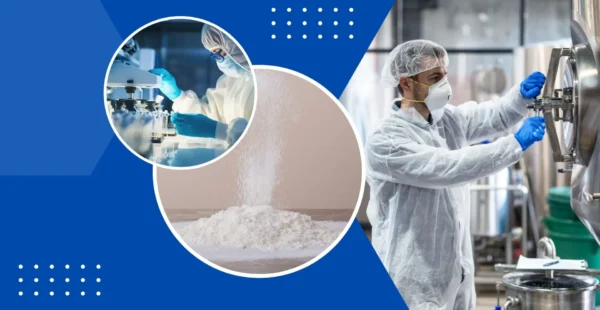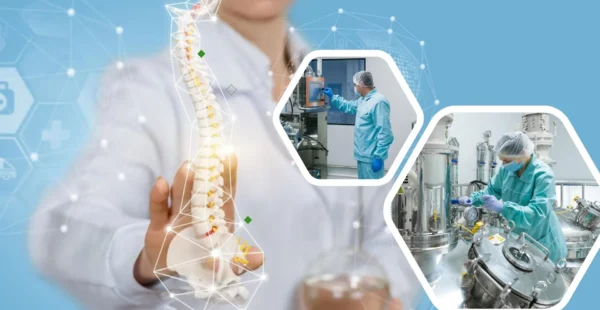-
Product Name:
Calcium Citrate
-
Molecular Formula:
C12H10Ca3O14.4H2O
-
Molecular Weight:
570.50 g/mol
-
CAS No.:
5785-44-4
-
HSN Code:
30049099
-
CID Code:
5282392
-
Shelf Life:
3 years - 20°C powder
-
ATC Code (WHO)
A12AA13
-
DrugBank ID
DB11093
-
ChemSpider ID
12584
-
UNII No.
86117BWO7P, MLM29U2X85 (tetrahydrate)
- USP
- IUPAC Names
- Synonyms
- MSDS
USP of Calcium Citrate
- Calcium citrate shows better absorption and used as calcium supplementation.
- Helps prevent and treat osteoporosis for strong bones.
- Regulates blood pressure and PMS symptoms.
- Gentler on kidneys.
IUPAC Names of Calcium Citrate
- tricalcium;2-hydroxypropane-1,2,3-tricarboxylate
- 2-hydroxy-1,2,3-propane-tricarboxylic acid calcium salt (2:3)
Synonyms of Calcium Citrate
- Calcium Citrate
- Tricalcium Dicitrate
- Tricalcium Citrate
- Calcium Citrate
- Calcium Citrates
- Citrate, Calcium
- Citrates, Calcium
- Tricalcium dicitrate
- Calcium citrate, tribasic
- Calcium Citrate anhydrous
- 1,2,3-Propanetricarboxylic acid, 2-hydroxy-, calcium salt (2:3)
- Calcium 2-hydroxy-1,2,3-propanetricarboxylate (3:2)
- tricalcium;2-hydroxypropane-1,2,3-tricarboxylate
- tricalcium citrate tetrahydrate
- 2-Hydroxy-1,2,3-propanetricarboxylic acid calcium salt (2:3)
- Tribasic calcium citrate
- Tricalcium dicitrate tetrahydrate
- Citric acid, calcium salt (2:3)
- calcium citrate tribasic
- tricalcium bis(citric acid)
- calcium 2-hydroxypropane-1,2,3-tricarboxylate (3:2)
- citric acid calcium salt (2:3)
- tricalcium bis(2-hydroxypropane-1,2,3-tricarboxylic acid)
- calcium 2-hydroxypropane-1,2,3-tricarboxylate (3/2)
MSDS of Calcium Citrate
Download MSDS PDF- MSDS Name: Calcium Citrate USP
- Product Code: CACUS97
- Recommended Use and Restrictions on Use: Pharmaceutical ingredient, Nutritional supplement, Industrial applications.
- Restrictions on Use: Avoid generating dust; refer to hazard information.
- General advice: Consult a physician. Show this safety data sheet to the doctor in attendance.
- If inhaled: If breathed in, move person into fresh air. If not breathing, give artificial respiration. Consult a physician.
- In case of skin contact: Wash off with soap and plenty of water. Consult a physician.
- In case of eye contact: Rinse thoroughly with plenty of water for at least 15 minutes and consult a physician.
- If swallowed: Never give anything by mouth to an unconscious person. Rinse mouth with water.
- Most important symptoms and effects, both acute and delayed: The most important known symptoms and effects are described in the labeling and/or in section 11
- Indication of any immediate medical attention and special treatment needed: No data available
- Flammability of the Product: May be combustible at high temperature.
- Auto-Ignition Temperature: Not available.
- Flash Points: CLOSED CUP: Higher than 93.3°C (200°F).
- Flammable Limits: Not available.
- Products of Combustion: Some metallic oxides.
- Products of Decomposition: acetone and calcium carbonate
- Fire Hazards in Presence of Various Substances: Not available.
- Explosion Hazards in Presence of Various Substances: Risks of explosion of the product in presence of mechanical impact/ static discharge: Not available.
- Fire Fighting Media and Instructions:
SMALL FIRE: Use DRY chemical powder.
LARGE FIRE: Use water spray, fog or foam. Do not use water jet. - Special Remarks on Explosion Hazards: Not available.
- Engineering Controls: Use process enclosures, local exhaust ventilation, or other engineering controls to keep airborne levels below recommended exposure limits. If user operations generate dust, fume or mist, use ventilation to keep exposure to airborne contaminants below the exposure limit.
- Personal Protection: Safety glasses. Lab coat. Dust respirator. Be sure to use an approved/certified respirator or equivalent. Gloves.
- Personal Protection in Case of a Large Spill: Splash goggles. Full suit. Dust respirator. Boots. Gloves. A self-contained breathing apparatus should be used to avoid inhalation of the product. Suggested protective clothing might not be sufficient; consult a specialist BEFORE handling this product.
- Exposure Limits: Not available.
- Appearance Form: White free flowing powder, with occasional friable lump.
- Form: Solid, powder in nature
- Color: White
- Molecular weight: 570.49 gm/mol
- Solubility: Slightly soluble in water, freely soluble in diluted 3(N) HCl & in diluted 2(N) Nitric acids, insoluble in alcohol.
- https://whmis.org/sds/
- https://www.osha.gov/sites/default/files/publications/OSHA3514.pdf
- https://reachonline.eu/reach/en/annex-ii.html
- https://www.cdc.gov/niosh/npg/
- https://pubchem.ncbi.nlm.nih.gov/compound/Calcium-citrate
- https://en.wikipedia.org/wiki/Calcium_citrate
- https://www.chemicalbook.com/ChemicalProductProperty_EN_CB4264668.htm

Description of Calcium Citrate
Calcium Citrate, a widely used calcium supplement, exists as a white, odorless, crystalline powder with the chemical formula Ca₃(C₆H₅O₇)∙xH₂O (where x can vary, indicating different levels of hydration). It does not have discernible odor. It dissolves poorly in water and is insoluble in alcohol. This powder possesses slight hygroscopic properties, and boasts a smooth, free-flowing texture. It is the calcium salt of citric acid, a naturally occurring organic acid found in citrus fruits.
This chelated form of calcium offers superior bioavailability compared to some other calcium sources, meaning it is more readily absorbed by the human body. This property makes calcium citrate a valuable therapeutic agent for managing calcium deficiencies and related conditions like osteoporosis. calcium citrate is gentle on the digestive system and carries lower risk of kidney stone.
We are a leading manufacturer dedicated to providing the highest quality calcium citrate. Our stringent GMP (Good Manufacturing Practice) and ISO guidelines and rigorous quality control processes guarantee a pure and potent supplement you can trust. WBCIL’s advanced spray drying technology delivers highly uniform API particles with minimized microbial content, ensuring formulation ease and consistent results.
What is calcium citrate formula?
Calcium Citrate has the chemical formula: C12H10Ca3O14
Calcium citrate formula and molecular weight
Molecular weight of calcium citrate is 498.4 g/mol.
Application of Calcium Citrate
Pharmaceutical Industry:
- Osteoporosis Treatment: Calcium Citrate is widely used in pharmaceutical formulations for the treatment and prevention of osteoporosis. Its high bioavailability ensures effective calcium absorption, crucial for maintaining bone density.
- Calcium Supplement: It is commonly used as a calcium supplement to prevent and treat calcium deficiencies in individuals, particularly those with conditions that impair calcium absorption.
- Bone Health Supplements: As a key ingredient in bone health supplements, Calcium Citrate helps improve bone strength and prevent bone-related disorders, especially in post-menopausal women and the elderly.
Dietary Supplements:
- General Health Supplements: Included in various dietary supplements, Calcium Citrate promotes overall well-being by providing a highly bioavailable form of calcium, essential for bone health and other bodily functions.
- Sports Nutrition: Utilized in sports nutrition products, it helps athletes maintain strong bones and muscles, enhancing performance and recovery.
- Prenatal Supplements: Used in prenatal supplements to support the increased calcium needs during pregnancy, aiding in the development of the fetal skeletal system.
- Senior Health Supplements: Included in supplements targeting the elderly, it helps prevent age-related bone density loss and supports overall health.
Food and Beverage Industry:
- Fortified Foods: Calcium Citrate is used to fortify foods and beverages such as cereals, juices, and dairy products to enhance their calcium content. This application is crucial for providing dietary calcium, especially in populations with low dairy intake.
- Functional Foods: Incorporated in the development of functional foods, it helps create products that offer health benefits beyond basic nutrition, addressing calcium deficiencies effectively.
Health and Wellness Industry:
- Bone Health Products: A component of various bone health products, Calcium Citrate supports the prevention and management of bone disorders by ensuring adequate calcium intake.
- Women’s Health Products: Used in supplements designed for women, it helps manage the increased risk of osteoporosis and other bone-related issues during and after menopause.
- Anti-Aging Products: Utilized in anti-aging supplements, it supports bone health and overall well-being, contributing to a youthful appearance and vitality.
Veterinary Medicine:
- Animal Supplements: Calcium Citrate is used in veterinary supplements to ensure adequate calcium levels in animals, supporting bone health and overall growth. This is particularly important for pets and livestock.
- Animal Feed Fortification: It is added to animal feed to enhance the calcium content, promoting healthy bone development and preventing calcium deficiency-related diseases in livestock.
Industrial Applications:
- Food Additive: Calcium Citrate is used as a food additive for various applications including as a preservative, flavoring agent, and firming agent in processed foods.
- Buffering Agent: It acts as a buffering agent in certain pharmaceutical and food products, helping to maintain stable pH levels and enhance the product’s stability.
Research and Development:
- Nutritional Research: Calcium Citrate is utilized in research to study calcium metabolism and the effects of different calcium compounds on health. Its high bioavailability makes it an ideal candidate for various nutritional studies.
- Pharmaceutical Development: It is included in the development of new pharmaceutical formulations aimed at improving calcium absorption and addressing calcium-related health issues.
















